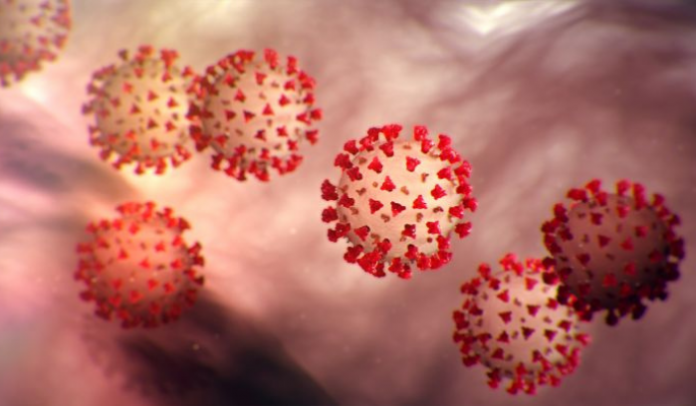A new sting in the corona pandemic – how experts assess the British coronavirus mutation B.1.1.7 and which measures are necessary.
Coronaviruses are changeable. B.1.1.7 is the abbreviation for a mutation of Sars-CoV-2 that is currently pushing the British health system to the limits of its capacity. The mutation of the virus increases the infectivity by 56 percent. More infected people mean that more people have to go to hospitals, and the percentage will be intensive care patients. That affects mortality. A new lockdown has therefore been imposed in the UK. In Austria, five people infected with the new mutation have so far been discovered; according to the Ages, the number of unreported cases will be higher.
How do mutations arise? When the virus attacks human cells and reproduces, changes occur over and over again. “Right from the start, we recorded one to two mutations per month,” says Richard Nehrer, head of the research group Evolution of Viruses and Bacteria at the University of Basel. The unique thing about the mutation B.1.1.7 is an accumulation of a total of ten to 15 changes at the same time, which seem to have prevailed in the south of England. The situation is similar to a second virus mutation, N501.V2, which is circulating in South Africa. They are variants of the virus that do not make infected people more ill but increase sick people’s number. “That’s why we’re concerned,” says Isabella Eckerle, head of the Emerging Viruses research group at the University of Geneva.
Are new measures necessary? “More medical-diagnostic surveillance,” says Andreas Bergthaler, head of the Viral Pathogenesis Research Group at CeMM in Vienna, and means increased gene sequencing of virus samples, “because there will always be new mutations in the coming months.” There is excellent surveillance in England and South Africa, so the mutations were discovered there first. The current contact restrictions for containment are sufficient – if they were complied with. According to the experts, this is not the case, according to the mobile phone movement data. “The biggest challenge is to motivate people to continue to support measures over the next few months,” said Bergthaler. Coronaviruses mutate. That the mutation B.1.1.7 was just discovered in England,
What helps against the spread of mutations
- Keep infection numbers low: The more a virus circulates in the population, the more likely it is that pathogens will change and mutate. “From a virological point of view, it is therefore important to keep the number of infections generally low,” says the virologist Judith Aberle from Med-Uni Vienna. Her colleague Christoph Steininger agrees. “We have to contain the pandemic, not the mutants.” The more infected, the more changes. There are two hypotheses about the origin of the current mutations. “Either there was an intermediate animal host, or the mutation arises in immunosuppressed patients who have been carrying the virus for a long time,” suspects the evolution expert Reinhard Neher from the University of Basel. The role of children in the infection process is discussed because of different lockdown rules.
- Better surveillance: Coronaviruses are changing. “We will always be confronted with new virus mutations,” said the head of viral pathogenesis at the CeMM research center in Vienna. “DNA sequencing for monitoring is essential to monitor what is happening and to be able to react,” says Andreas Bergthaler. In Great Britain, five percent of all samples are sent through genome sequencing machines; in Austria, just 0.3 percent. “We need intensified surveillance,” says Daniela Schmid, infection epidemiologist at the Ages health agency. It’s about actively looking for mutants. But that alone is not enough. “It’s also about building up resources, personnel, and know-how and analyzing them promptly,” says Richard Neher from the Virus Evolution research group at the University of Basel. For his colleague Bergthaler, it was also a wake-up call for an EU initiative to coordinate measures to slow down the spread. The British variant B.1.1.7 has so far been detected in 32 countries, of which 15 are European. So far, five cases are known in Austria.
- Digitization as an opportunity: Because the coronavirus does not cause any symptoms but can just as quickly become a fatal disease, this is a mammoth task for contact tracing. The mutation B.1.1.7 is 56 percent more contagious. From a statistical point of view, this means that an infected person no longer infects just one other person, but rather 1.5 others. “With the lockdowns, the current variants can be kept at the same level, so they can hardly be reduced or contained,” says complexity researcher Stefan Thurner from the Complexity Science Hub at Med-Uni Vienna, which is why the new, more contagious variant is also “of concern” worrying. His approach: digitization. This is the only way to identify and isolate cases faster and more efficiently.
- End goal herd immunity: The vaccinations start, and at the same time, the first Sars-CoV-2 mutations are known. “A current paper shows that the mRNA vaccinations are still effective,” says the virologist Christoph Steininger and sees this as positive news. Besides, the mRNA vaccine manufacturers have announced that they can adapt their vaccines for more severe infections quickly, which is currently unnecessary. “Vaccinate, vaccinate, vaccinate,” says infection biologist Daniela Schmid from the Ages health agency, because once the vulnerable groups are protected, the situation will generally relax. Surveillance is also essential for vaccinations. “We don’t yet know how vaccination affects the infection process,” says evolutionary biologist Reinhard Neher from the University of Basel. “In the pandemic, we have to learn to deal with surprises and uncertainties,” Bergthaler from the CeMM research institute is convinced. The all-clear is only given when herd immunity has been achieved, i.e., 70 percent of the population are immune to Sars-CoV-2 and its mutants.
- Restrict travel: Bitter but real, and travel contributes to the spread of infectious diseases. In this respect, all kinds’ travel restrictions are an effective measure to contain the virus – including the new mutation. The coronavirus’s new variant is particularly popular in south-west England, so it can be assumed that people will spread it more easily from there via the travel routes. After a new mutation was detected in a patient in Brisbane, Australia, politics imposed a general lockdown on the city. By February 15, by order of the government in Canberra, international flight connections were cut by half. “In many regions of the world, the infection process is not monitored to the same extent,” says Isabella Eckerle from the University of Geneva. Anyone returning to Australia from abroad must have a negative corona test. Tests upon arrival should become routine. Due to the increased infectivity and symptom-free progress, quarantine regulations are provided after arrival. (Karin Pollack, 9.1.2021)


